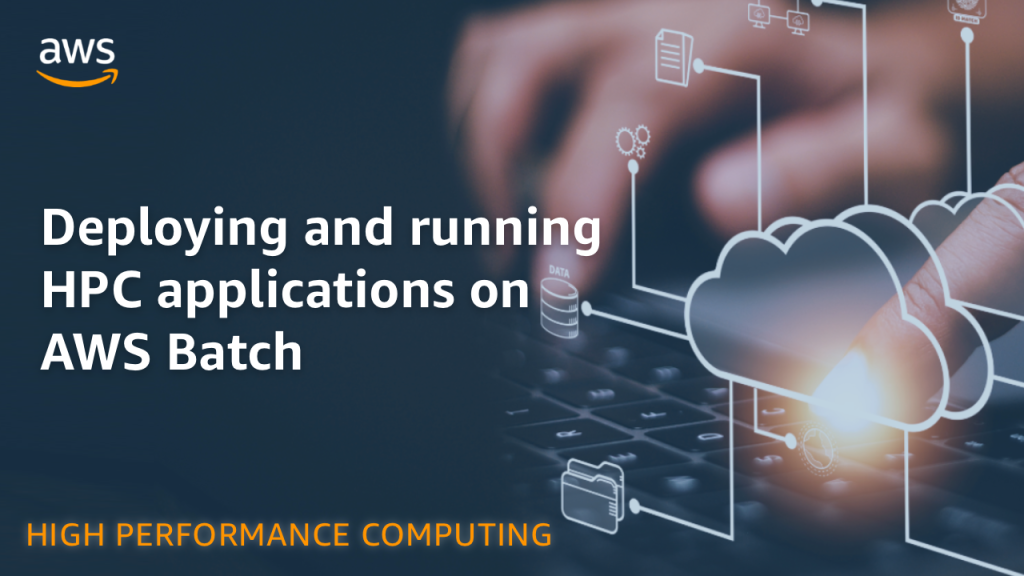AWS HPC Blog
Category: Amazon FSx for Lustre
Optimize your CAE/CFD workloads with Amazon FSx for Lustre Data Repository Association
HPC customers in automotive and manufacturing love Amazon FSx for Lustre because it combines a managed, easy-to-use service with the power of a high throughput parallel file system. Moreover, FSx for Lustre has a native integration with Amazon S3, our object storage service that is designed for durability and low cost. You can link your […]
Scalable Cryo-EM on AWS Parallel Computing Service (PCS)
Cryo-EM data processing just got a major boost! Learn how AWS Parallel Computing Service can help structural biology teams scale their HPC infrastructure and streamline Cryo-EM research. Discover a recommended reference architecture that leverages the power of the cloud.
Strategies for distributing executable binaries across grids in financial services
You can boost the performance of your compute grids by strategically distributing your binaries. Our experts looked at lots of strategies for fast & efficient compute grid operations – to save you some work.
Build and deploy a 1 TB/s file system in under an hour
Want to set up a high-speed shared file system for your #HPC or #AI workloads in under an hour? Learn how with this new blog post.
Deploying and running HPC applications on AWS Batch
In this post AWS Professional Services describes how they recommend using AWS Batch and Amazon Elastic Container Service (Amazon ECS) managed services for running HPC applications like GROMACS and RELION.
Building a 4x faster and more scalable algorithm using AWS Batch for Amazon Logistics
In this post, AWS Professional Services highlights how they helped data scientists from Amazon Logistics rearchitect their algorithm for improving the efficiency of their supply-chain by making better planning decisions. Leveraging best practices for deploying scalable HPC applications on AWS, the teams saw a 4X improvement in run time.
Expanded filesystems support in AWS ParallelCluster 3.2
AWS ParallelCluster version 3.2 introduces support for two new Amazon FSx filesystem types (NetApp ONTAP and OpenZFS). It also lifts the limit on the number of filesystem mounts you can have on your cluster. We’ll show you how, and help you with the details for getting this going right away.
Using Spot Instances with AWS ParallelCluster and Amazon FSx for Lustre
Processing large amounts of complex data often requires leveraging a mix of different Amazon EC2 instance types. These types of computations also benefit from shared, high performance, scalable storage like Amazon FSx for Lustre. A way to save costs on your analysis is to use Amazon EC2 Spot Instances, which can help to reduce EC2 costs up to 90% compared to On-Demand Instance pricing. This post will guide you in the creation of a fault-tolerant cluster using AWS ParallelCluster. We will explain how to configure ParallelCluster to automatically unmount the Amazon FSx for Lustre filesystem and resubmit the interrupted jobs back into the queue in the case of Spot interruption events.
Supporting climate model simulations to accelerate climate science
The Amazon Sustainability Data Initiative (ASDI), AWS is donating cloud resources, technical support, and access to scalable infrastructure and fast networking providing high performance computing solutions to support simulations of near-term climate using the National Center for Atmospheric Research (NCAR) Community Earth System Model Version 2 (CESM2) and its Whole Atmosphere Community Climate Model (WACCM). In collaboration with ASDI, AWS, and SilverLining, a nonprofit dedicated to ensuring a safe climate, the National Center for Atmospheric Research (NCAR) will run an ensemble of 30 climate-model simulations on AWS. The climate runs will simulate the Earth system over the period of years 2022-2070 under a median scenario for warming and make them available through the AWS Open Data Program. The simulation work will demonstrate the ability to use cloud infrastructure to advance climate models in support of robust scientific studies by researchers around the world and aims to accelerate and democratize climate science.
Numerical weather prediction on AWS Graviton2
The Weather Research and Forecasting (WRF) model is a numerical weather prediction (NWP) system designed to serve both atmospheric research and operational forecasting needs. With the release of Arm-based AWS Graviton2 Amazon Elastic Compute Cloud (EC2) instances, a common question has been how these instances perform on large-scale NWP workloads. In this blog, we will present results from a standard WRF benchmark simulation and compare across three different instance types.









